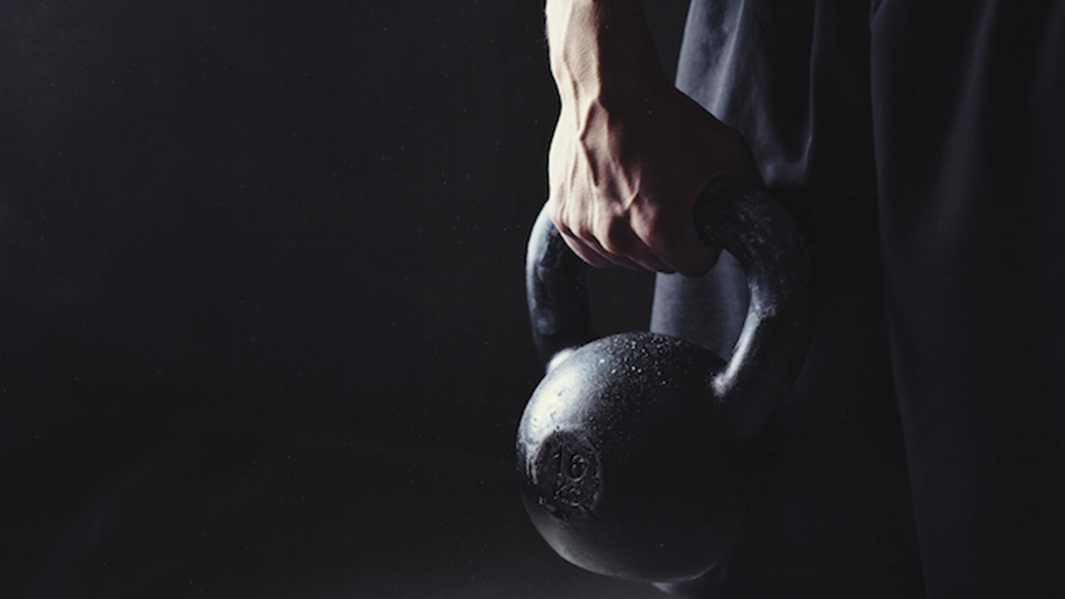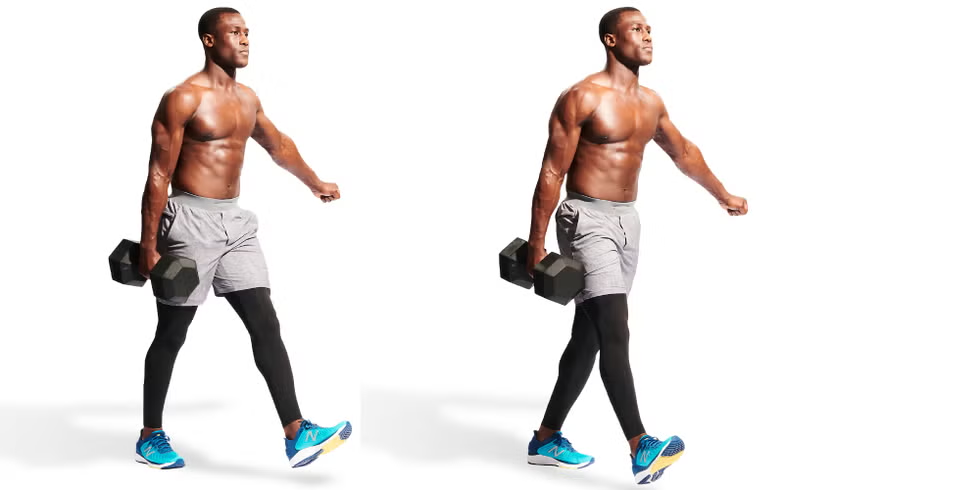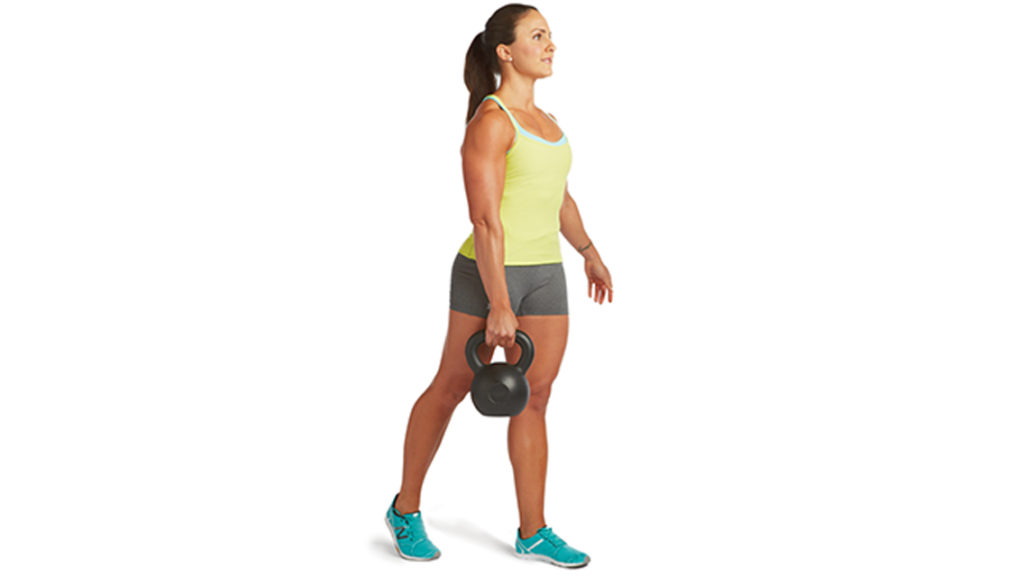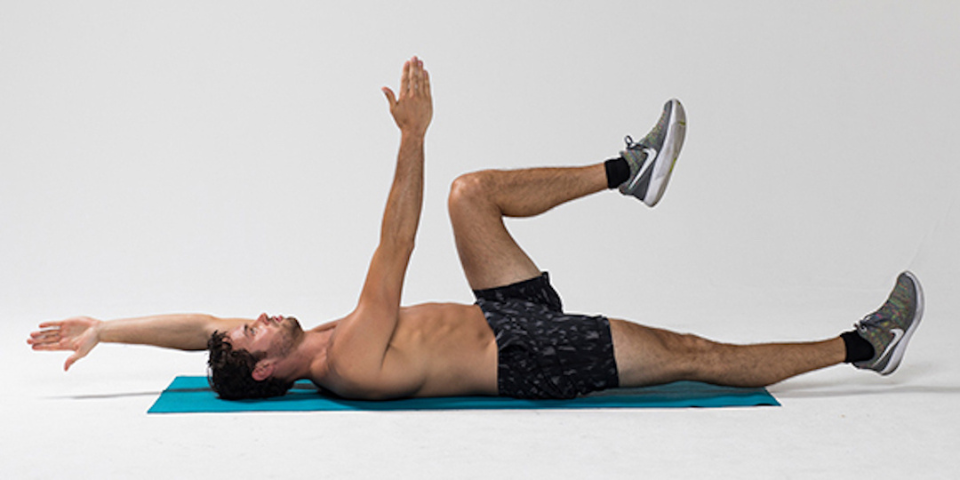How to Do the Single-Arm Farmer’s Carry: Build Grip, Core, and Total-Body Control
The Single-Arm Farmer’s Carry might look simple — pick up a heavy weight and walk — but it’s one of the most powerful tools in a lifter’s arsenal for building core stability, grip strength, posture, and real-world strength.
This isn’t just a “conditioning” move. It’s a full-body test of control, endurance, and balance, and it belongs in every serious lifter’s programming.
In this article, you’ll learn:
- What makes the single-arm carry unique
- Muscles worked and why it’s so effective
- How to perform it correctly
- Common form mistakes
- How to progress it
- Programming strategies for strength, size, and stability
What Is the Single-Arm Farmer’s Carry?
The Single-Arm Farmer’s Carry (aka suitcase carry) involves holding a heavy dumbbell or kettlebell in one hand, and walking while keeping your torso upright and stable.
It challenges the body to resist lateral flexion and rotation, making it a true anti-lateral-flexion core movement — while also torching your forearms, shoulders, and legs.
Muscles Worked
Primary:
- Obliques and Quadratus Lumborum (anti-lateral flexion)
- Transverse Abdominis (core brace)
- Forearms and Grip
Secondary:
- Glutes and hamstrings (hip stability)
- Upper back and traps (postural alignment)
- Calves and feet (balance and gait)
Why it matters: This is the kind of strength that transfers — not just to the gym, but to everyday life and injury prevention.
How to Do the Single-Arm Farmer’s Carry (Step-by-Step)
Set-Up:
- Choose a heavy dumbbell or kettlebell.
- Stand tall with feet hip-width apart.
- Hold the weight in one hand at your side.
- Brace your core — imagine pulling your ribs down and glutes tight.
Execution:
- Walk in a straight line, eyes forward, shoulders level.
- Avoid leaning toward or away from the weight.
- Take smooth, controlled steps.
- Switch hands after the designated time or distance.
Duration:
- 20–40 meters (or 30–60 seconds)
- 2–4 sets per side
Common Mistakes to Avoid
❌ Leaning Toward the Weight
Fix: Engage your obliques and glutes to stay upright.
❌ Overstriding or Rushing
Fix: Use short, controlled steps — not power walking.
❌ Weight Crashing Into Leg
Fix: Keep arm slightly off the body; control the swing.
❌ Not Breathing
Fix: Breathe through the brace — don’t hold your breath unless performing a very short heavy carry.
Variations and Progressions
🔹 1. Double-Arm Farmer’s Carry
- Great for grip and traps
- Less core challenge, more symmetrical load
🔹 2. Offset Carry
- One heavy, one light implement
- Forces constant postural correction
🔹 3. Front Rack Carry (Single or Double)
- Adds shoulder and postural load
🔹 4. Bottoms-Up Kettlebell Carry
- Improves shoulder stability and control
🔹 5. Overhead Carry
- Great for shoulder health and anti-extension control
How to Program the Single-Arm Farmer’s Carry
For Core Strength:
- 2–3 sets of 20–40 meters per arm
- Add to the end of leg or full-body days
For Grip and Conditioning:
- 3–4 sets of 60 seconds per arm
- Use in a circuit or superset
For Athletic Power:
- Use explosive transitions (carry → sprint)
- Focus on perfect posture under fatigue
Where It Fits in Your Split
Push Day: Finish with single-arm carries to reinforce posture after pressing.
Pull Day: Pair with rows or RDLs for a full posterior chain circuit.
Leg Day: Reinforce hip stability and build stamina under load.
Core Focus Day: Use as a main lift or paired with anti-rotation work like the Pallof Press.
Final Word: Simple, Brutal, Effective
The Single-Arm Farmer’s Carry is proof you don’t need fancy machines or flashy moves to build a bulletproof core and powerful frame.
Train it with intent. Progress the weight. Stay strict with posture.
Because if you can carry heavy weight, under control, while staying tall — you’re not just strong. You’re built to last.
🔗 Related Articles:
- The Complete Guide to Core Training for Muscle, Strength, and Stability
- Top Core Training Mistakes (And How to Fix Them)
- Pallof Press: Build Core Strength Through Anti-Rotation
- Dead Bug: Master Core Control and Spine-Safe Strength
- Core Workouts for Bulking vs Cutting





